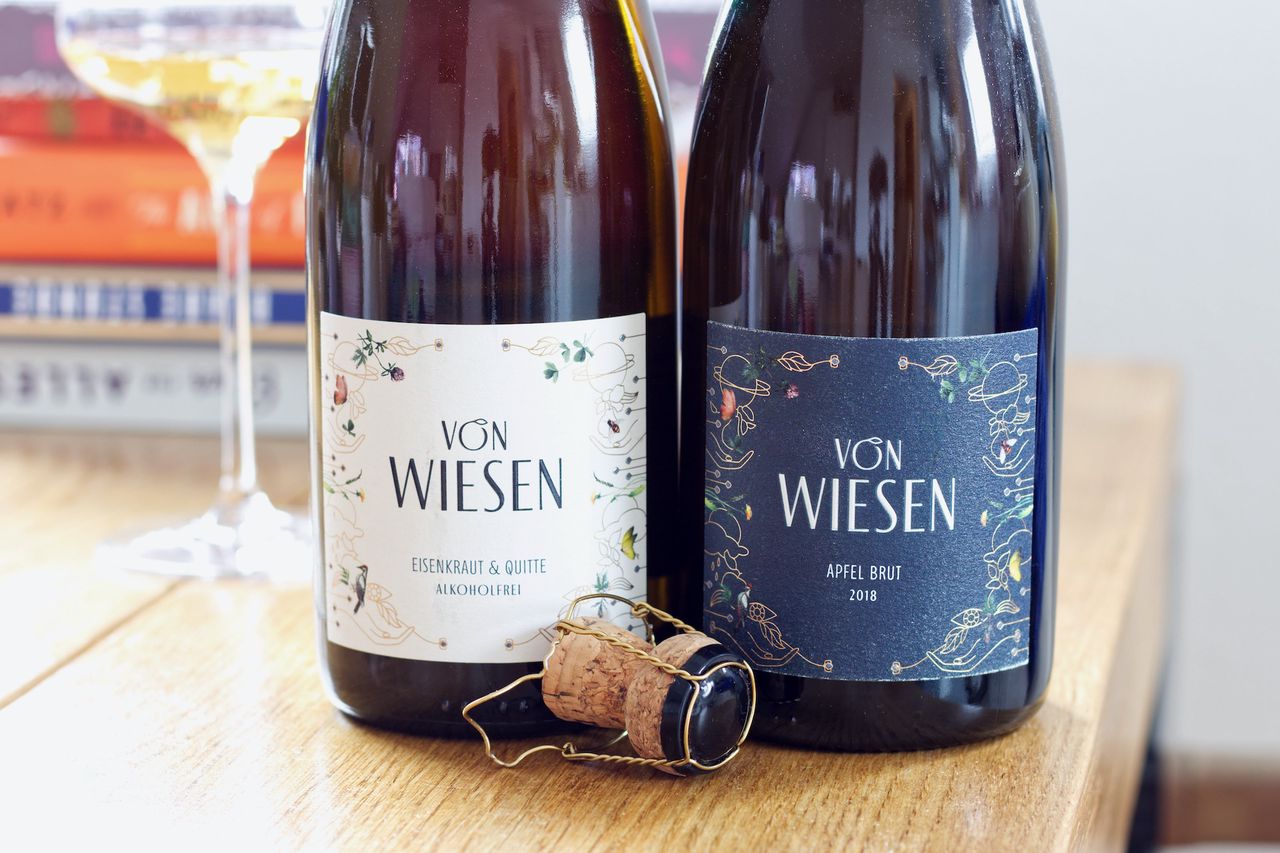Two Bottles Von Wiesen
We drink from the fruit sparkling wine project of Niko Brandner a non-alcoholic bottle of Verbena and Quince and an Apple brut from 2018.

If you’ve been interested in German sparkling wines in recent years, then it’s almost guaranteed that you’ve had the sparkling wines from Griesel in your glass at some point. What Niko Brandner puts there on the bottle is incredibly good. And there was or is also a bottle of apple sparkling wine in the range at Griesel. This traditionally belongs to Hessen and helps to quench Niko Brandner’s love of experimentation. And it is precisely this passion for fruit sparkling wines that is now being expanded under the Von Wiesen label. The idea is to process fruit from organic farms in the region or from traditional meadow orchards into sparkling wine with the same care given to grapes. There is quite an interesting assortment with apple and currant, apple and hops or quince sparkling wine. All tasted and we liked all of them. But today we have two other representatives in the glass. In January, I always try to present drinks with less alcohol or even completely alcohol-free alternatives and these two bottles fit perfectly. We try a non-alcoholic bottle of Quince and Verbena and a bottle of Apple Brut from 2018.
The Verbena and Quince is two-thirds herbal verbena tea. To this is added about one-third direct quince juice and three percent juice obtained from lactic acid fermentation of celeriac. Plus a little lemon juice and hops. On paper, that reads pretty wild at first. Apple Brut is simpler to describe. It is made entirely from regional apple varieties that are fermented spontaneously and then left on the yeast for at least 24 months without fining or filtration before being disgorged. Yes, you read correctly. 24 months. That is more than many sparkling wines get. At least in Germany they would be required to have at least 9 months.
But we start alcohol-free. The nose is full of herbs, you can smell the quince, some seaweed, forest honey and black tea. It all seems quite tart and it’s the same in the mouth. But there’s also an amazing depth to the flavor. The fizz is a bit reminiscent of the herbs in Almdudler, and there’s always some fruit hiding behind the tartness. I think the fermented celery juice in particular contributes neatly to the depth and complexity. Of all the non-alcoholic bubbly alternatives, I can’t think of one right now that felt so dry and that I found delicious. I wouldn’t put an easy-drinking sticker on the bottle now, but this is certainly one of the most exciting and best non-alcoholic alternatives we’ve had in the glass. It’s a real discovery and one that, with the right pairing, should probably work great with food, too. But to what exactly I still have to find out. I look forward to that experimentation.
And the apple is off to a good start, too. The apple fruit is nice and clear and yet also quite tart on the nose. There are also notes of brioche and toasted walnuts. This is completely different from the Sidre we drank from Normandy two weeks ago. Somehow more serious, but somehow also significantly less charming because of it. I don’t even want to have to choose between the two. On the tongue there is a fair bit of pull complementing the fruit. The bubbles are really nice and you can tell by it, and also by the brioche and nutty notes, the time on the yeast. So time and care pay off even with sparkling wine made from fruit other than grapes. I’m definitely curious to see what else will happen at Von Wiesen. These two bottles are a treat.